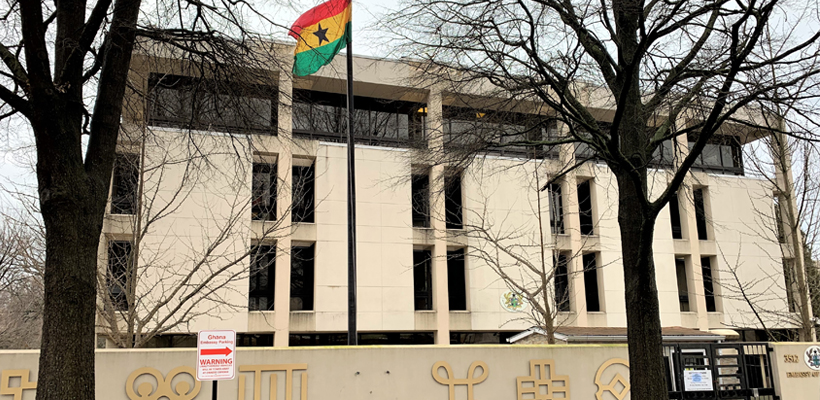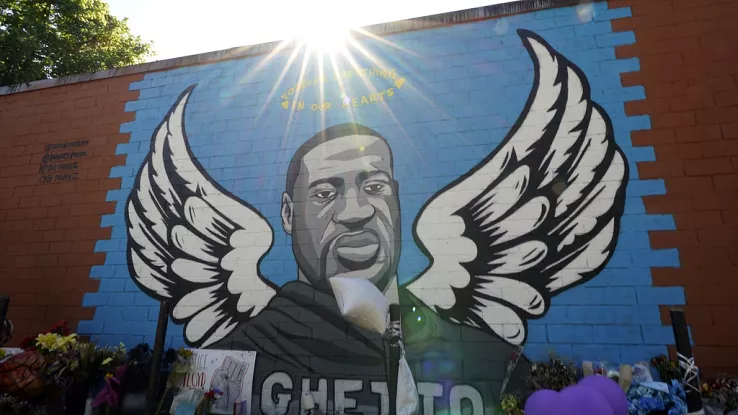Photograph Source: kallerna – CC BY-SA 4.0
For the nonhuman animal cause, the 19th century’s end would bring to a close a defining period—a transformative 30-year era beginning in 1866, with the founding of the first animal welfare society. It is a story of activism and activists like George Thorndike Angell, Henry Bergh, and Caroline Earle White, who propelled the anti-cruelty cause forward. But it’s also a story of the rapidly changing America they lived in, three decades of cultural and economic transformation that created, among so many other things, the attitudes that contemporary Americans hold about nonhuman creatures around them: the love for their pets, the reverence for (certain) wildlife species, and the distant ignorance of the food animals that now live and die at great remove from them.
If Americans want to understand why society believes what it believes about animals and why we feel the complicated feelings we have for them, we need to understand the 30 years in which those sentiments first coalesced.
This story is also about many other figures from that era—Americans who spent those same three decades revaluing the nation’s animals in other ways, sometimes in concert with the activists but often in tension with them. This period would see the early rise of veterinary medicine in America, thanks in no small part to the efforts of an idealistic, entrepreneurial Frenchman, Alexandre Liautard. Americans also would see the nation’s conservation movement’s early growth as it dawned on nature lovers like George Bird Grinnell and Harriet Hemenway that some of the nation’s wild animal species were, like the passenger pigeon, on the verge of total disappearance.
During roughly the same period, the rise of scientific medicine would pose the question of research on animals, aka vivisection, a practice that anti-cruelty activists would decry but that eminent doctors like John Call Daltonand William W. Keen argued was necessary to alleviate human suffering. Meanwhile, P.T. Barnum—in creating the mass entertainment industry—was figuring out how to captivate audiences with the individuality of animals, telling (i.e., inventing) the stories of his exotic acquisitions and asking paying customers to meet them with reverence and awe.
All these changes occurred against a backdrop of astonishing population growth and an industrializing economy. Historians sometimes use the phrase “Gilded Age” as a catchall for this period, which might make readers think first and foremost about its wealthiest profiteers. However, millions of Americans saw their jobs and lives transformed during this era by the rise of large corporations.
Emerging along with corporate capitalism was perhaps the most dispiriting mode of thinking about animals. It reconceived them as yet another industrial input, a disposable source of meat, milk, eggs, hides, and more, to be raised and killed at an unimaginable scale without compunction. Philip D. Armour and other meat barons spent these three decades inventing and refining the systems to do just that in Chicago.
The “new type of goodness” would arise simultaneously with some new forms of institutionalized cruelty.
Cultural Shifts and Conflicting Views on Nonhuman Animals
There is another equally important reason to care about this story today. Animals aside, the 2020s in America are proving to be a time of whiplashing moral shifts. What once seemed like impossibilities—widespread acceptance of gay rights, for example, and of nonconforming gender identities—have become a reality, even as what seemed like settled norms around issues of reproductive freedom, or even beliefs in racial equality, have become threatened, upended, and clawed back.
To understand how such moral change happens, 21st-century Americans can use the late 19th-century revolution in attitudes toward animals as an illuminating case study. It shows what a vertiginous shift in norms can look like from the inside and how tenuous and incomplete any such shift can be.
Unlike human victims of injustice, animals suffer, but they are voiceless, and their families cannot advocate for them.
Therefore, any movement on behalf of animals must hinge on a collective leap of imagination, on the power of narrative. Far from being a rational product of Enlightenment thought, the movement was the child of Romanticism, which underappreciated revolution in human consciousness that placed the subjective experiences of the individual—its raptures but also its sufferings—at the center of the moral and aesthetic universe.
Having made such a leap on behalf of humans, it became natural to make it on behalf of other consciousnesses as well; this helps explain how the ultimate Romantic, Lord Byron, came to write such an indelible epitaph for his Newfoundland, Boatswain, and for the whole canine species “whose honest heart is still his Master’s own / who labors, fights, lives, breathes for him alone.” As the animal welfare movement grew, this radical empathy, couched in anthropomorphic prose and woven into narratives, would be one of the engines that propelled it.
Crusade for Kindness and Moral Responsibility: George Angell
For the movement’s first decade, building the institutions to police and punish cruelty was its overriding goal. But over the following two decades, George Angell led what essentially became his own movement—an evangelical crusade focused on imagining animals in the circle of care. He dreamed of an army of kindness and set about making it real, enlisting the nation’s children as his foot soldiers.
Angell dreamed of creating a new literature of animal appreciation, and he succeeded beyond all expectations, launching one of the 19th century’s bestselling novels, Black Beauty, and helping to create a whole new genre of animal storytelling. And he believed, more fervently than any of his fellow activists, in the interconnection of human obligations, that resistance to war, racism, plutocracy, and animal cruelty were duties that walked hand in hand.
In a sense, all the transformations of America’s animals during these three tumultuous decades were acts of reimagination, channeling new urges to tell new kinds of stories about them—as surrogate children, as bosom friends, as exotic visitors, as natural resources, as valuable tools of industry, and as raw material for medicine or food. It was hardly a coincidence that this also was a time when animals were all around, living cheek to jowl with human populations in a rapidly urbanizing nation, as well as one in which the nation’s wild animal populations were beginning to plummet.
In the 21st century, that feels like a lost world; a different kind of imagination is required to bring it into view. Our 21st-century approximation of a 19th-century American bestiary is varied and troublesome. It includes the domestic animals in the nation’s teeming cities, the livestock bred for fast growth and slaughter, the once ubiquitous wildlife species now dwindling, and the exotic creatures exhibited for rapt crowds.
Humans can never entirely know what it was like to be any of these animals, but the story of the crusade to ease their suffering in the Gilded Age—an inspiring, incomplete, and important moment in the history of American social change—is ultimately about the attempt to bridge that unbridgeable divide. By imagining what humans can never experience, we allow ourselves to reckon with our moral obligations to all the creatures around us.
At 73 years of age, Angell was, by 1896, the grand elder statesman of the campaign for animals in the United States. And yet, for him, the cause of mercy was never about just domestic animals, charismatic wild animals, or even animals at all. It was about everything.
This was why, during the first months of that year, the readers of Our Dumb Animals found that the lion’s share of the publication was devoted to Angell’s passion against war. The occasion was a diplomatic crisis brewing with Great Britain over a border dispute between then-British Guiana and Venezuela. President Grover Cleveland’s secretary of state, Richard Olney, had determined that the United States held the unilateral right to arbitrate such disputes under the Monroe Doctrine—that 75-year-old declaration of hemispheric supremacy.
Rhetoric with Britain had ratcheted to the point that Congress was appropriating $100 million for a military buildup. In a rapid-fire series of dyspeptic, italics-strewn items, Angell gnashed his teeth at everyone agitating for war:
“If we could have our way, war should never be declared except by a majority vote of the whole nation—wives and mothers should have the right to vote—and all men, whether in the United States Senate or elsewhere, who should seek to plunge us into an un-Christian and unholy war should be denounced as public enemies in every pulpit and newspaper, and on every platform of the land.”
He railed against the Monroe Doctrine itself, calling it “perfect nonsense.” In response to Theodore Roosevelt’s saber-rattling on the subject, he published two items lampooning “Ranchman Roosevelt” (who was then emerging as a national political figure). These items reminded his animal-loving readers of a series Roosevelt once published in which he admitted to having allowed cattle on his ranch to starve to death in winter.
In response to Angell’s diatribes, the Chicago Tribune called him “a fair illustration of the nonsense a man can utter when he has wheels in his head.” The San Francisco Examiner described his articles as “wild-eyed treason.” The Sacramento Bee reported that because of Angell’s “sneering” about the Monroe Doctrine, local public schools had prohibited those issues of Our Dumb Animals—which the Bee described, in a headline as “A Paper Which Seeks to Plant the Seeds of Disloyalty in the School-rooms of the Country.”
To be sure, during the months that Angell’s antiwar fever consumed him (the crisis would cool as the year progressed, with the border conflict amicably settled the following year), the animal cause was not absent from his thoughts. He had begun to agitate for the vivisection cause, offering a bounty of $100 for anyone who provided evidence of cruel animal experimentation in Massachusetts; perhaps as a result of this offer, he also aired a report—from a “perfectly reliable authority”—that medical students at Boston University were being required to “operate on many cats and dogs,” but had been “cautioned not to talk on the subject with outside parties.” He inveighed, month after month, against the equine check rein and the docking of tails. He evangelized his Bands of Mercy, the roster stretching past 25,000.
But he also fumed at the unrepresentative nature of the U.S. Senate, noting that “little states of some 50,000 or more population have the same power to enact or prevent the enactment of laws as the great states of New York and Pennsylvania.” He floated a version of what would eventually become the New Deal, saying, “A million men could be easily employed today at fair wages on needed public improvements, and there is plenty of money to pay them only it is not rightly divided.”
The millenarian rhetoric of 1879 had faded. Angell had undoubtedly seen enough to know that none of his causes were advancing in lockstep if they could be said to be advancing at all. He knew the nation’s moral landscape could wither in places even as it flourished in others. He pleaded for the restriction of vivisection at colleges, knowing full well that the influential presidents of Harvard and other prestigious schools were fighting hard against him.
Angell seemed to understand well that on the matter of militarism and the Monroe Doctrine, the raw passions of the American public ran against his pacifism. Even the check rein, the easiest thing in the world for a horse owner to forswear, persisted purely out of a stubborn allegiance to fashion among the urban elite.
All Angell could do was implore his readers, hope for the best, and stay focused on persuading future generations. “One thing we must never forget,” read an item he placed in the magazine over and over again—seemingly as a reminder to himself; he was, after all, getting on in years—was “that the infinitely most important work for us is the humane education of the millions who are soon to come on the stage of action.”
If the issues are different in the 21st century, the invocation is wise in times of advancement, stagnation, or even reaction: Look to the future. For what else, in the end, is there to do?
This is an adapted excerpt from Our Kindred Creatures: How Americans Came to Feel the Way They Do About Animals by Bill Wasik and Monica Murphy (Knopf Doubleday, 2024). It is licensed under Attribution-NonCommercial-NoDerivatives 4.0 International (CC BY-NC-ND 4.0) by permission of Knopf Doubleday. This adaptation was produced for the web by Earth | Food | Life, a project of the Independent Media Institute.










